Modern Safety Technologies Equipped in Cars
In today’s modern era where technology has made almost everything possible, one field which needs special mention is the automobile industry. Over the last few years, several types of accidents have been prevented with the help of advanced car safety features installed within the vehicles. Not only, it has made our rides entertaining but at the same time there is less danger of mishaps.
The latest car safety technologies are being made available by the luxury brands like Mercedes as well as mass market manufacturers like Maruti Suzuki. Even though the more pricier your model is the more advanced will be its features, yet the basic components like ABS and airbags can now be availed in almost every range. These fitments provide assistance in parking, offer night vision, render seats with adjustable facility, prevent the car from skidding, automatically locks up the door after sensing the speed of the car and what not. You can even save your car from theft and there are special features for safeguarding children during the journey.
Enlisted below are some crucial safety features that make use of latest technology so as to give a complete protection to the occupants. Let’s take a look at these equipment along with their brief details:
Tire Pressure Monitoring System
It is a safety device fitted in your vehicle that aims to send you a warning whenever one or more tires of the automobile are under-inflated. It shows a yellow indicator light on the instrument panel. Earlier, in order to check the air pressure, one had to step out of the car, crouch down and check the tires with the help of a gauge. But with the indicator, things have become much more convenient and a lot of serious accidents have been avoided since the introduction of this device.
Also Read – Top 10 Summer Car Care Tips
Seatbelts
These are basically designed to prevent you from colliding with the steering wheel, wind-shield or dashboard by keeping you closer to the seat. Nowadays, seatbelts are accompanied by adjustable shoulder straps as well as pre-tensioners, which retract the seatbelt instantly in a crash to avoid excess of slack. There are load limiters that help the belts to extend gradually so as to keep them from applying too much force on the chest. Besides, for the kids, there is a rear seat centre shoulder belt which can be used for safeguarding the little ones.
Blind Spot Monitoring System
This system monitors the distance and speed of the objects in the nearby lanes and notifies the driver about a possible collision. While driving, if a car is far behind you, you can see it in the rear view mirror. But, when it comes closer, there is a position which is called ‘blind spot’ as it’s not visible through any of the mirrors. In such a situation, if the driver decides to change the lane, it could lead to a severe accident. Thus this system helps to avoid any such thing either with through a radar or a camera.
Adaptive Cruise Control
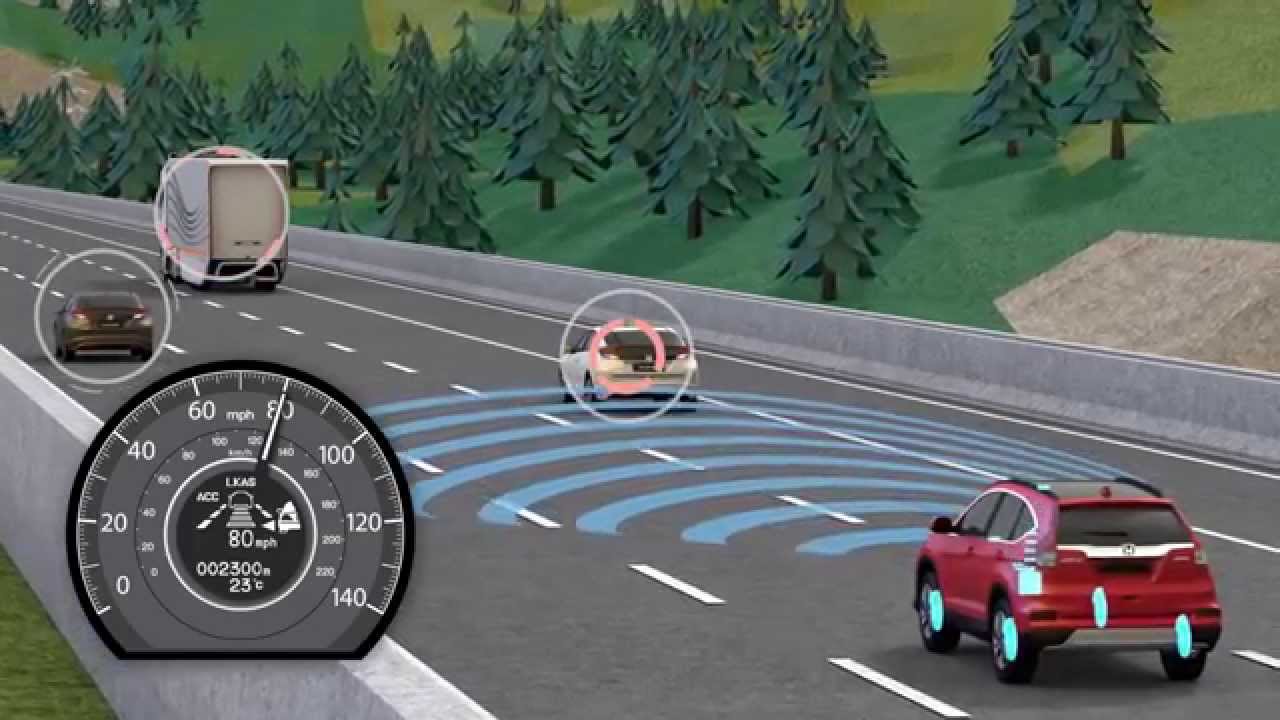 Also Read: Latest Cars in India 2016
Also Read: Latest Cars in India 2016
It is also known as Autonomous Cruise Control and utilises the forward looking radar, which is installed behind the grille. It detects the speed and distance of the vehicle moving ahead of it and takes the necessary action. As opposed to the conventional setting, the adaptive facility automatically decelerates the car when the vehicle ahead slows down or when any new object comes in the way. Again, when the path is clear, it sends signals to the engine and re-accelerate the vehicle.
Lane Departure Warning
Various car manufacturers have fitted their respective automobiles with a warning system that warns the driver whenever he/she changes the lane. Some have an audio signal, while some get a vibration on the steering wheel. It relies on the markings on the road and if these lines are not visible to the system, it notifies about that too.
Lane Keep Assist
This system also addresses the same issue like the above feature, but the difference is that instead of sending warning, it steers the car back to the correct lane. It doesn’t rely on the driver to take a corrective action.
Airbag
It is an occupant restraint system composed of a flexible fabric bag, which can also be referred as an airbag cushion. During a collision, sudden deceleration or impact with another object, it inflates and then quickly deflates. It is aimed at protecting the occupant in case of a crash by offering an energy absorbing surface between the occupant’s and the car’s body parts. There are various airbag configurations fitted inside a car like-
- Driver airbag
- Passenger airbag
- Side curtain airbag
- Knee bolster airbag
- inflatable seatbelt airbag
- Seat mounted side impact airbag
After the activation of crumple zones during a collision, the rest of the work is activated by crash sensors. These sensors send information to the airbag electronic controller unit (ECU) regarding the collision type, angle and severity of the impact. In a response to this, the controller unit judges whether deployment is needed or not. Then, if deployment is needed, it triggers various circuits to inflate the required airbags within the automobile.
Emergency Brake Assist
In case of an emergency, the driver has to apply maximum force at the brakes that too within very less time, which is not possible for a human. So, the Emergency Brake Assist monitors the situation and interprets the speed and force with with brakes are being applied. If the driver is trying to push the emergency stop and he fails to push the pedal with full force, this system overrides and applies the brakes with the required amount of force until the ABS takes over to prevent the car from skidding.
Anti-lock Braking System
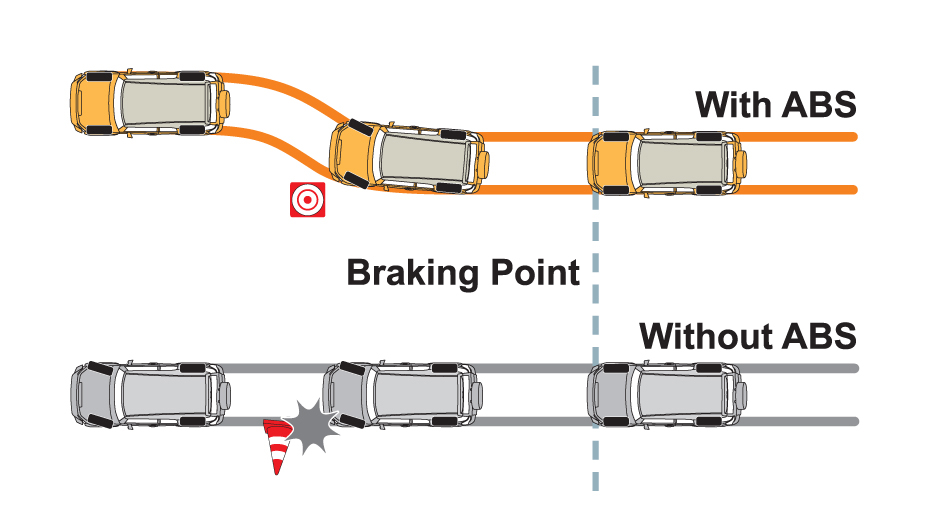 Also Read: ABS or no ABS, what difference does it make?
Also Read: ABS or no ABS, what difference does it make?
This system prevents the wheels from locking up in a panic braking situation and let the driver take control over the steering, while he/she is applying brakes. In some vehicles, it works in combination with the emergency brake assist, thereby reducing the stopping distance. This is because it avoids the delay when the drivers fails to apply the brakes as hard or as fast as it’s needed.
Night Vision Assist
This is an interface that helps the driver to view the road ahead of him when the headlights fail to judge the distance of an object/pedestrian/animal in front of the car in case of darkness or extremely bad weather. There are 3 kinds of display in a night vision assist system-
- instrument cluster
- navigation
- head-up display
Further, there are 2 kinds of system, namely active and passive. The former uses infrared light to illuminate the road. It displays images with high resolution with the range of 150-200 metres. Moving on, the latter uses a thermographic camera in the process, thereby displaying low resolution images within the range of 300 metres.
Rearview Camera
There is a camera mounted on the rear portion of a car that captures shows all that is going on behind it. This offers a great help to the driver while he is parking/reversing the vehicle as it helps in detecting the “blindspot” which is otherwise not visible.
All Wheel Drive
In this mechanism equal amount of power is distributed among the front and rear wheels in order to maximise traction. It works in combination with traction control to prevent the drive wheels from getting slipped when the driver applies extra power while the car is accelerating.
Traction Control
It works in cars which are already fitted with an AWD as well as ABS facility. It improves the stability of an automobile by controlling the drive wheels from being slipped when excess of power is applied. During acceleration, it automatically adjusts the engine output and applies braking force to selective wheels.
Head Restraints
These are automotive safety features fitted on the top of the seats so as to limit the rearward movement of the occupants’ head in relation to the rest of the body whenever there is a collision. This helps in preventing serious head injuries and accidents to a large extent. In some cars, it can be adjusted according to the height of the occupant. Many of you must be unaware of the fact that these headrests can even be removed in order to break the glass window when you are stuck in a locked car.
Electronic Stability Control
It basically avoids crashes by preventing skidding when the drivers loses control over the car. This autonomous system utilises various intelligent sensors to detect any loss of control and then automatically applies brakes to the relevant wheel. Its effectiveness depends upon the traction between the road and the car. So, if the tyres are old or worn out, it won’t be much effective.
Child Seats
Well, for the obvious reasons, kids need special attention and more safety than the adults. In India, you may have noticed people making their children sit on their lap all the time, even in the journeys. However, that’s not the case with people residing abroad. There are child seats designed particularly for the children as per their age and size that can be installed in the cars. Usually, these seats are positioned at the rear centre so as to ensure that the baby is protected from all sides.
Drowsiness Detection System
Drowsiness and fatigue of the driver often lead to a lot of accidents and thus this technology has been developed in order to keep the driver awake throughout his/her ride. Different cars utilise different mechanism to detect the drowsiness of the driver. Some use steering inputs from the power steering, some use the information of lane monitoring, while other monitor the face of the driver through a camera.
Daytime Running Lights
These are the headlamps that remain illuminated during the daytime so that they clearly visible to others on the road, thereby eliminating the possibility of any collision or crash. With the use of DRLs, the drivers’ peripheral perception of vehicles has increased to a considerable extent. Moreover, it also makes it easy to judge the distance.
Auto Dimming Mirror Feature
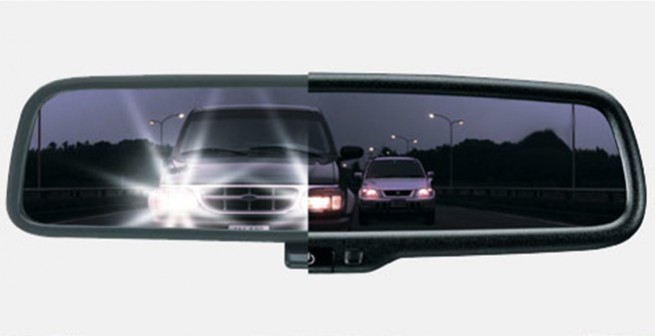 Also Read: Upcoming Cars in India 2016
Also Read: Upcoming Cars in India 2016
While driving late at night, the headlights of other vehicles on the road may cause an unbearable glare in your rear view mirror, making it difficult for you to drive. Such cases often lead to serious mishaps. So, in order to keep you focussed, the auto dimming mirror could be of great help. It senses the ambient light and then fine tunes the glass’s tint so that if extra beam comes up the mirror will automatically adjust it before you could even notice.
Final Words
After going through all these car safety technologies enlisted above, it is quite evident that the presence of these fitments has not only made our rides safer, but enjoyable as well. With the advancement in technology, everything seems to be so simple now. We have come far away with the latest techniques like night vision, blindspot monitoring, auto dimming mirror, etc. The modern system warns the occupants by interacting with them through audible and visible signs, which considerably reduces the manual efforts. Isn’t it cool?
Well, these were some of the prominent car safety features, which have literally changed people’s driving experience along with making things much safer and secure for them. If you have any queries or feedback, you can let us know about it in the comments section below.
Modern Safety Technologies Equipped in Cars
http://www.blog.sagmart.com/wp-content/uploads/2016/05/Modern-Safety-300x300.jpg All About CarsAutomobiles car safety features,car safety technologies,safety featuresIn today’s modern era where technology has made almost everything possible, one field which needs special mention is the automobile industry. Over the last few years, several types of accidents have been prevented with the help of advanced car safety features installed within the vehicles. Not only, it has made our rides entertaining but at the same time there is less danger of mishaps.
The latest car safety technologies are being made available by the luxury brands like Mercedes as well as mass market manufacturers like Maruti Suzuki. Even though the more pricier your model is the more advanced will be its features, yet the basic components like ABS and airbags can now be availed in almost every range. These fitments provide assistance in parking, offer night vision, render seats with adjustable facility, prevent the car from skidding, automatically locks up the door after sensing the speed of the car and what not. You can even save your car from theft and there are special features for safeguarding children during the journey.
Enlisted below are some crucial safety features that make use of latest technology so as to give a complete protection to the occupants. Let’s take a look at these equipment along with their brief details:
Tire Pressure Monitoring System
It is a safety device fitted in your vehicle that aims to send you a warning whenever one or more tires of the automobile are under-inflated. It shows a yellow indicator light on the instrument panel. Earlier, in order to check the air pressure, one had to step out of the car, crouch down and check the tires with the help of a gauge. But with the indicator, things have become much more convenient and a lot of serious accidents have been avoided since the introduction of this device.
Also Read – Top 10 Summer Car Care Tips
Seatbelts
These are basically designed to prevent you from colliding with the steering wheel, wind-shield or dashboard by keeping you closer to the seat. Nowadays, seatbelts are accompanied by adjustable shoulder straps as well as pre-tensioners, which retract the seatbelt instantly in a crash to avoid excess of slack. There are load limiters that help the belts to extend gradually so as to keep them from applying too much force on the chest. Besides, for the kids, there is a rear seat centre shoulder belt which can be used for safeguarding the little ones.
Blind Spot Monitoring System
This system monitors the distance and speed of the objects in the nearby lanes and notifies the driver about a possible collision. While driving, if a car is far behind you, you can see it in the rear view mirror. But, when it comes closer, there is a position which is called ‘blind spot’ as it’s not visible through any of the mirrors. In such a situation, if the driver decides to change the lane, it could lead to a severe accident. Thus this system helps to avoid any such thing either with through a radar or a camera.
Adaptive Cruise Control
 Also Read: Latest Cars in India 2016
Also Read: Latest Cars in India 2016
It is also known as Autonomous Cruise Control and utilises the forward looking radar, which is installed behind the grille. It detects the speed and distance of the vehicle moving ahead of it and takes the necessary action. As opposed to the conventional setting, the adaptive facility automatically decelerates the car when the vehicle ahead slows down or when any new object comes in the way. Again, when the path is clear, it sends signals to the engine and re-accelerate the vehicle.
Lane Departure Warning
Various car manufacturers have fitted their respective automobiles with a warning system that warns the driver whenever he/she changes the lane. Some have an audio signal, while some get a vibration on the steering wheel. It relies on the markings on the road and if these lines are not visible to the system, it notifies about that too.
Lane Keep Assist
This system also addresses the same issue like the above feature, but the difference is that instead of sending warning, it steers the car back to the correct lane. It doesn’t rely on the driver to take a corrective action.
Airbag
It is an occupant restraint system composed of a flexible fabric bag, which can also be referred as an airbag cushion. During a collision, sudden deceleration or impact with another object, it inflates and then quickly deflates. It is aimed at protecting the occupant in case of a crash by offering an energy absorbing surface between the occupant’s and the car’s body parts. There are various airbag configurations fitted inside a car like-
- Driver airbag
- Passenger airbag
- Side curtain airbag
- Knee bolster airbag
- inflatable seatbelt airbag
- Seat mounted side impact airbag
After the activation of crumple zones during a collision, the rest of the work is activated by crash sensors. These sensors send information to the airbag electronic controller unit (ECU) regarding the collision type, angle and severity of the impact. In a response to this, the controller unit judges whether deployment is needed or not. Then, if deployment is needed, it triggers various circuits to inflate the required airbags within the automobile.
Emergency Brake Assist
In case of an emergency, the driver has to apply maximum force at the brakes that too within very less time, which is not possible for a human. So, the Emergency Brake Assist monitors the situation and interprets the speed and force with with brakes are being applied. If the driver is trying to push the emergency stop and he fails to push the pedal with full force, this system overrides and applies the brakes with the required amount of force until the ABS takes over to prevent the car from skidding.
Anti-lock Braking System
 Also Read: ABS or no ABS, what difference does it make?
Also Read: ABS or no ABS, what difference does it make?
This system prevents the wheels from locking up in a panic braking situation and let the driver take control over the steering, while he/she is applying brakes. In some vehicles, it works in combination with the emergency brake assist, thereby reducing the stopping distance. This is because it avoids the delay when the drivers fails to apply the brakes as hard or as fast as it’s needed.
Night Vision Assist
This is an interface that helps the driver to view the road ahead of him when the headlights fail to judge the distance of an object/pedestrian/animal in front of the car in case of darkness or extremely bad weather. There are 3 kinds of display in a night vision assist system-
- instrument cluster
- navigation
- head-up display
Further, there are 2 kinds of system, namely active and passive. The former uses infrared light to illuminate the road. It displays images with high resolution with the range of 150-200 metres. Moving on, the latter uses a thermographic camera in the process, thereby displaying low resolution images within the range of 300 metres.
Rearview Camera
There is a camera mounted on the rear portion of a car that captures shows all that is going on behind it. This offers a great help to the driver while he is parking/reversing the vehicle as it helps in detecting the “blindspot” which is otherwise not visible.
All Wheel Drive
In this mechanism equal amount of power is distributed among the front and rear wheels in order to maximise traction. It works in combination with traction control to prevent the drive wheels from getting slipped when the driver applies extra power while the car is accelerating.
Traction Control
It works in cars which are already fitted with an AWD as well as ABS facility. It improves the stability of an automobile by controlling the drive wheels from being slipped when excess of power is applied. During acceleration, it automatically adjusts the engine output and applies braking force to selective wheels.
Head Restraints
These are automotive safety features fitted on the top of the seats so as to limit the rearward movement of the occupants’ head in relation to the rest of the body whenever there is a collision. This helps in preventing serious head injuries and accidents to a large extent. In some cars, it can be adjusted according to the height of the occupant. Many of you must be unaware of the fact that these headrests can even be removed in order to break the glass window when you are stuck in a locked car.
Electronic Stability Control
It basically avoids crashes by preventing skidding when the drivers loses control over the car. This autonomous system utilises various intelligent sensors to detect any loss of control and then automatically applies brakes to the relevant wheel. Its effectiveness depends upon the traction between the road and the car. So, if the tyres are old or worn out, it won’t be much effective.
Child Seats
Well, for the obvious reasons, kids need special attention and more safety than the adults. In India, you may have noticed people making their children sit on their lap all the time, even in the journeys. However, that’s not the case with people residing abroad. There are child seats designed particularly for the children as per their age and size that can be installed in the cars. Usually, these seats are positioned at the rear centre so as to ensure that the baby is protected from all sides.
Drowsiness Detection System
Drowsiness and fatigue of the driver often lead to a lot of accidents and thus this technology has been developed in order to keep the driver awake throughout his/her ride. Different cars utilise different mechanism to detect the drowsiness of the driver. Some use steering inputs from the power steering, some use the information of lane monitoring, while other monitor the face of the driver through a camera.
Daytime Running Lights
These are the headlamps that remain illuminated during the daytime so that they clearly visible to others on the road, thereby eliminating the possibility of any collision or crash. With the use of DRLs, the drivers’ peripheral perception of vehicles has increased to a considerable extent. Moreover, it also makes it easy to judge the distance.
Auto Dimming Mirror Feature
 Also Read: Upcoming Cars in India 2016
Also Read: Upcoming Cars in India 2016
While driving late at night, the headlights of other vehicles on the road may cause an unbearable glare in your rear view mirror, making it difficult for you to drive. Such cases often lead to serious mishaps. So, in order to keep you focussed, the auto dimming mirror could be of great help. It senses the ambient light and then fine tunes the glass’s tint so that if extra beam comes up the mirror will automatically adjust it before you could even notice.
Final Words
After going through all these car safety technologies enlisted above, it is quite evident that the presence of these fitments has not only made our rides safer, but enjoyable as well. With the advancement in technology, everything seems to be so simple now. We have come far away with the latest techniques like night vision, blindspot monitoring, auto dimming mirror, etc. The modern system warns the occupants by interacting with them through audible and visible signs, which considerably reduces the manual efforts. Isn’t it cool?
Well, these were some of the prominent car safety features, which have literally changed people’s driving experience along with making things much safer and secure for them. If you have any queries or feedback, you can let us know about it in the comments section below.

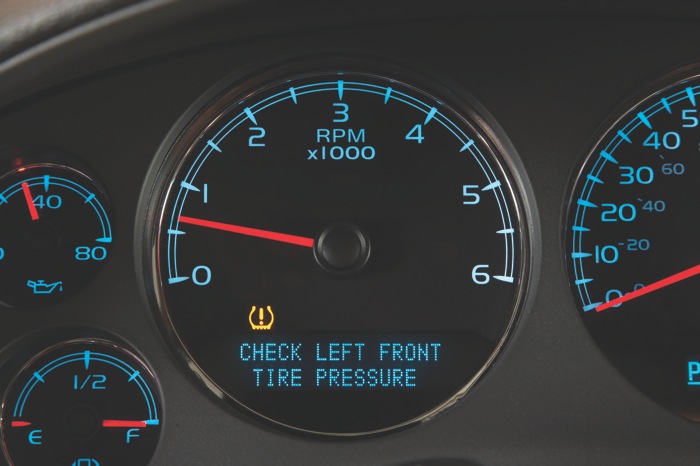
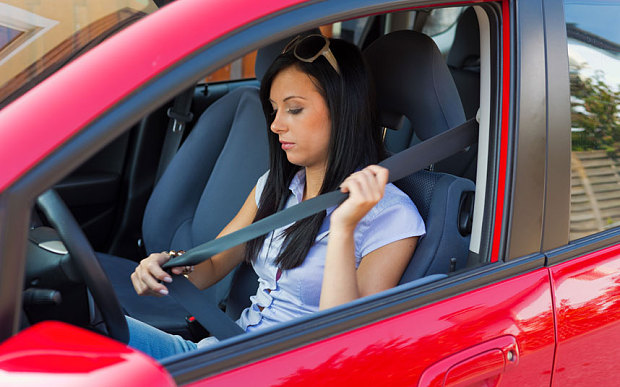
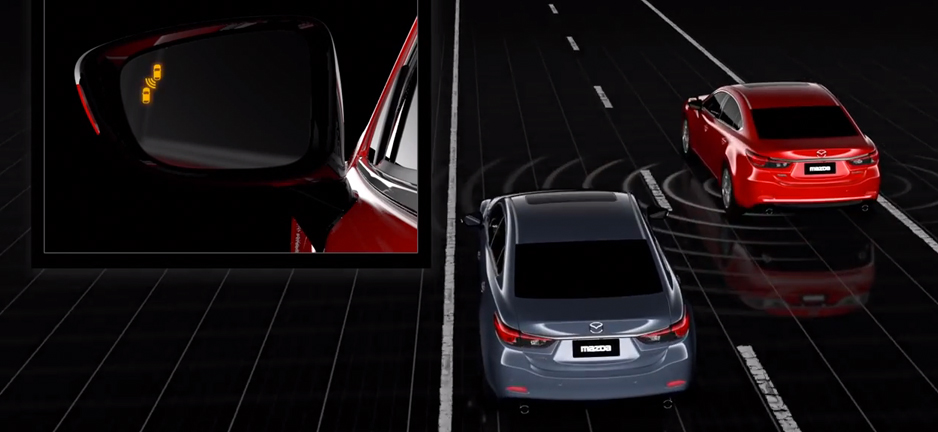
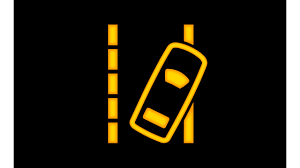
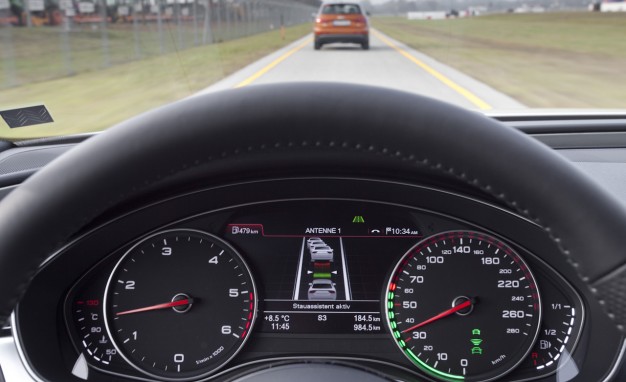
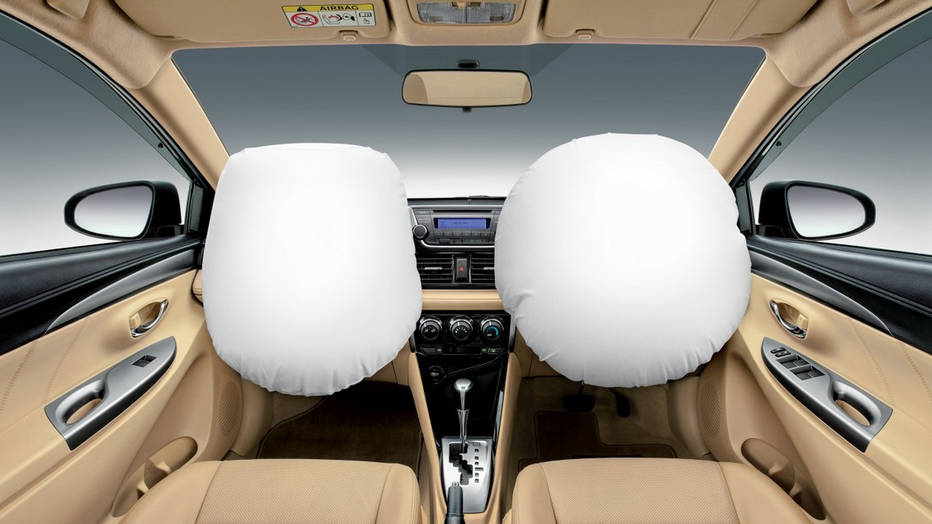
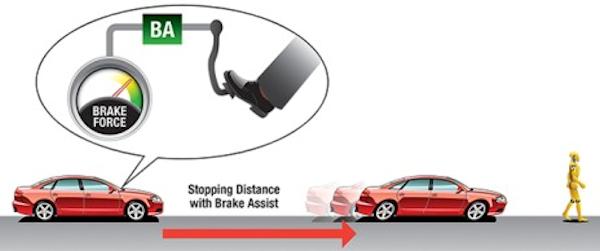
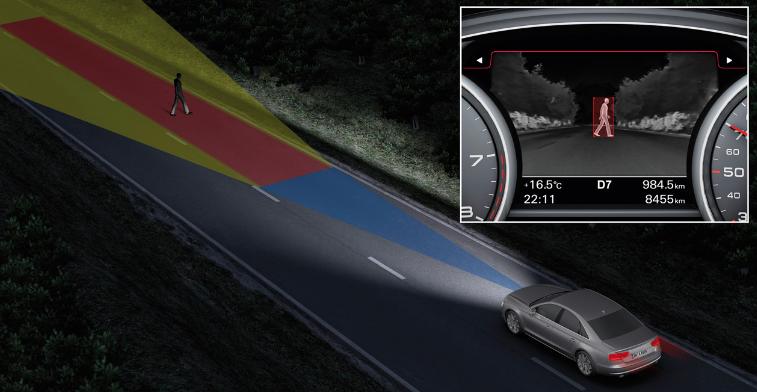
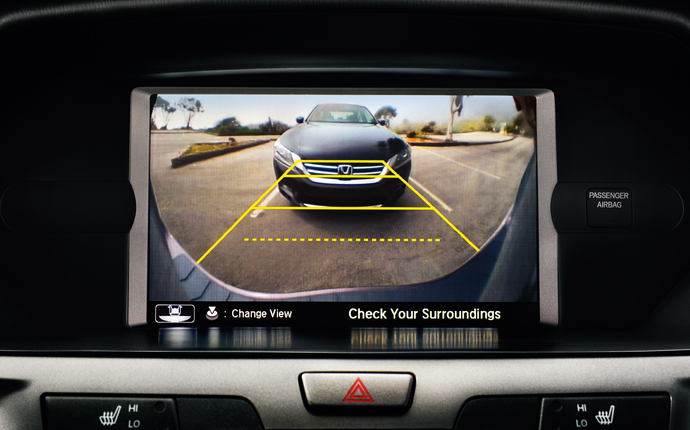
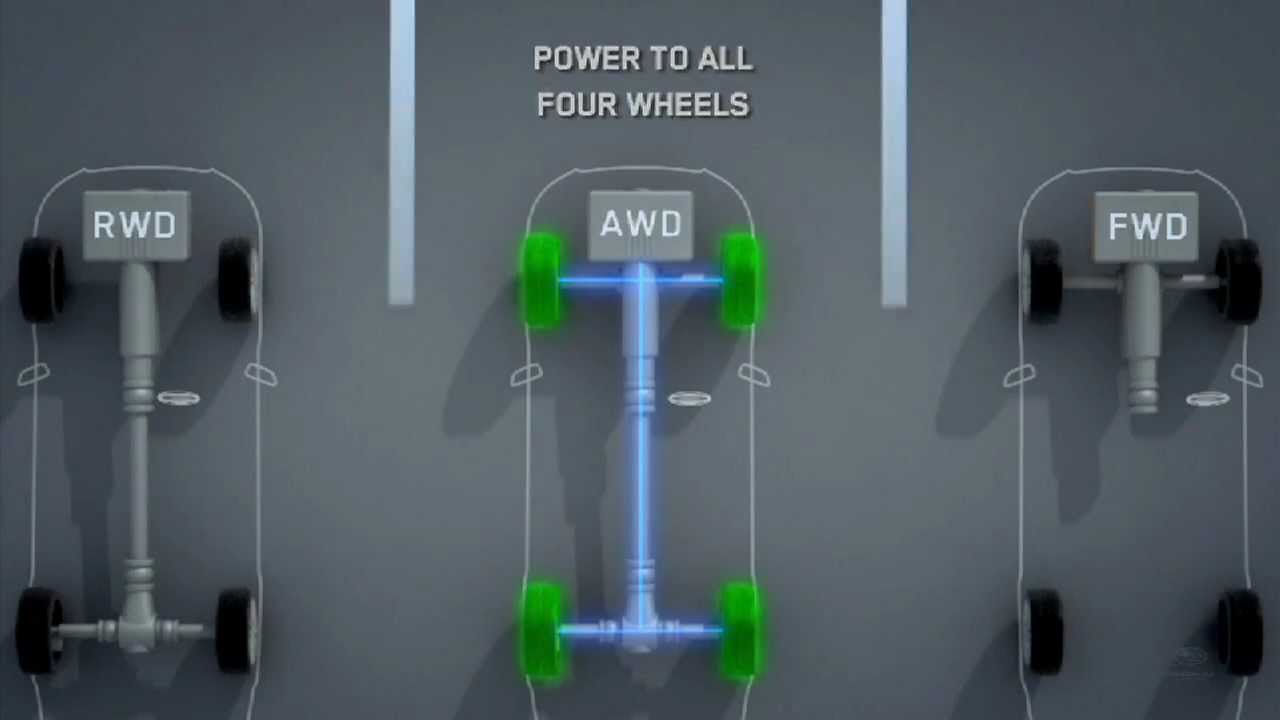
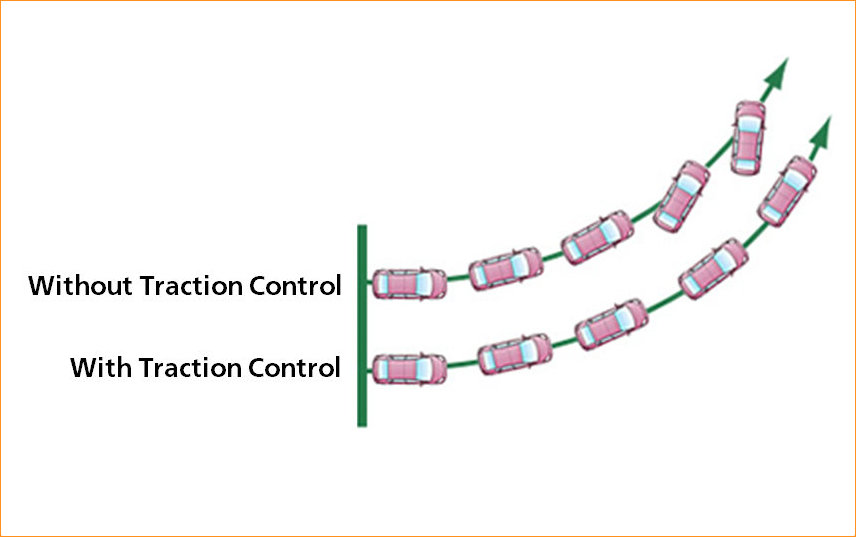
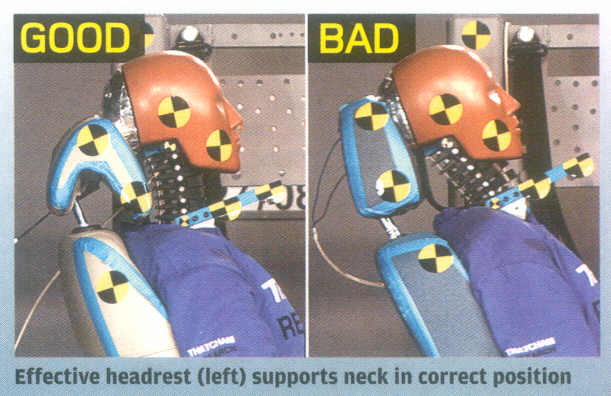
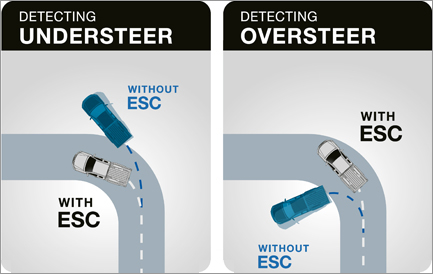
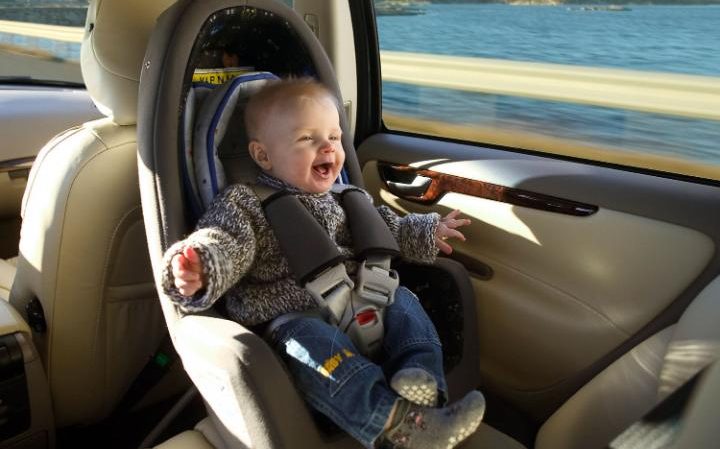
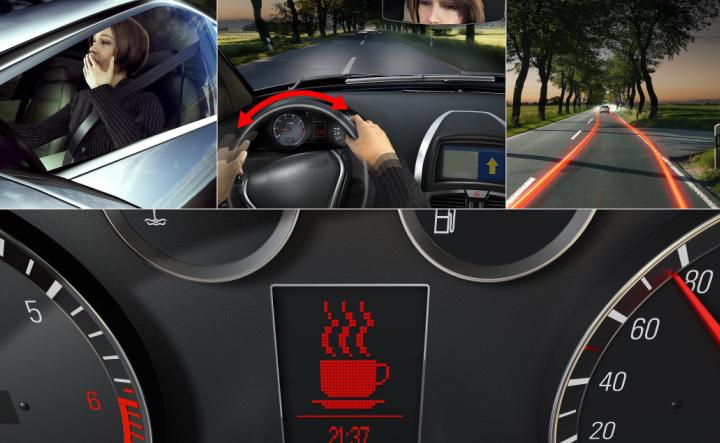

Leave a Reply